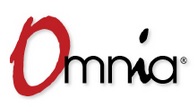Get the Sound YOU Want: A Programmer's Guide to Processing | Telos Alliance
By The Telos Alliance Team on Oct 14, 2015 4:00:00 AM
 Get the Sound YOU Want: A Programmer's Guide to Processing
Get the Sound YOU Want: A Programmer's Guide to Processing
Before I joined The Telos Alliance fulltime in 2001, I was involved in the programming and management of some pretty successful American radio stations for almost 35 years.
Quite early on, I realized that the audio signature of a station is the final stop in the presentation process and is, in some ways, the most critical piece of the programming puzzle. This is not simply a question of aesthetics. Time and time again, TSL reduction can be traced to improper audio processing, where listener fatigue robs you of your most important listeners: The P1 long termers.
But wait, isn’t audio processing some mysterious hocus-pocus that only an engineer knows how to create and define? And what about the language barrier? Don’t you have to know a bunch of technical terms in order to communicate effectively?
Not really.
Back in the 1970s, I was part of the programming team at a major market station. No one really processed FM seriously in those days, primarily because FM wasn’t dominant — plus, the FM processors of the era were pretty rudimentary. I noticed that the board feed sounded so much cleaner and more appealing than the air feed and mentioned this to our new Chief Engineer. Since we were a pretty aggressive radio station in terms of programming and marketing, we wanted an equally powerful audio signature, but without the heavy pumping of compression and dynamic restrictions prevalent at the time. The Chief and I listened together to specific records (how quaint!) as I a/b’d between air and board, illustrating a lost tambourine here, an anemic bottom end thump there, vocal presence missing, and other aural deteriorations between source material and broadcast. However, the commercial processing gear of the day just couldn’t cut it, so this fellow started playing around with homebrew, outboard stuff and suddenly the music started to come to life on air. I wanted to hear all the instruments in each song, the presence of the singer, the power of the production and the warmth of the jock, yet still achieve dial impact and authority without heavy compression or dynamic restrictions.
The point is: I knew what I wanted, but also knew that building a signature sound was a procedure which required a step by step approach working in cooperation with the engineer, pointing out flaws along the way in clear, “civilian” language. You don’t need to know any tech terms.
Today, with sophisticated audio processors like the Omnia 11, 9, 7 and ONE, your engineer has plenty of onboard tools and pre-sets at their disposal to help address your concerns. You might get lucky and find the perfect pre-set, but if not, don’t be afraid to dig in and help create your own recipe.
Although Omnia features like “Undo” can help correct bad source material, it is always better to have the cleanest source material to begin with. This is one of the secrets of audio processing. The cleaner your source material the more power and loudness you can extract without tearing your audio to shreds. For instance, as Head of Operations of one of America’s leading Oldies stations, I went through five versions of “Leader of The Pack” before I found the one that had the least distortion. With a voice-oriented sports-talk or news-talk station, you have the added responsibility of getting a good quality mic processor and tailoring each mic pre-set to the voice fingerprint of each talent. Naturally, this should be done for any format with live mics, but with voice-oriented formats, it is absolutely critical since the mics are center stage.
One more tip: listen on various kinds of radios. Naturally, there will be compromises made to get your signature sound on a mono bedside radio, the kitchen radio, the car, earbuds, and a good set of speakers, but here’s where knowing your audience’s listening habits come in. If you have a Classic Hits or Classic Rock station, keep an ear on your mono mix. Some of those earlier stereo recordings have extreme left/right separation and often fold back into mono at reduced modulation. This drove me crazy, so I had my engineer reduce the overall stereo spread a bit while I listened in mono during an appropriate song. Then I found the compromise between enough stereo effect and adequate modulation in mono. Watch for older stereo material that’s out-of-phase as well.
Using the dayparting feature (I wish I had that years ago!), you may want to tell your engineer to set the processing to be more aggressive in drive times (for noisy car environments) and back it off midday (for extended office listening) and nights (for home and earbuds). This rule may not apply, of course, based on your format and listeners’ lifestyles, but that’s where you—the programmer—can use your research and/or your gut to make these determinations.
 Remember: Your station’s audio signature is as much your responsibility as the program content.
Remember: Your station’s audio signature is as much your responsibility as the program content.
That’s because audio processing IS program content.
Oh, and remember that engineer that worked with me in the control room back in the 1970s who was so resourceful and determined to help get our station to sound just right?
His name was Frank Foti, the founder of Omnia Audio.
Telos Alliance has led the audio industry’s innovation in Broadcast Audio, Digital Mixing & Mastering, Audio Processors & Compression, Broadcast Mixing Consoles, Audio Interfaces, AoIP & VoIP for over three decades. The Telos Alliance family of products include Telos® Systems, Omnia® Audio, Axia® Audio, Linear Acoustic®, 25-Seven® Systems, Minnetonka™ Audio and Jünger Audio. Covering all ranges of Audio Applications for Radio & Television from Telos Infinity IP Intercom Systems, Jünger Audio AIXpressor Audio Processor, Omnia 11 Radio Processors, Axia Networked Quasar Broadcast Mixing Consoles and Linear Acoustic AMS Audio Quality Loudness Monitoring and 25-Seven TVC-15 Watermark Analyzer & Monitor. Telos Alliance offers audio solutions for any and every Radio, Television, Live Events, Podcast & Live Streaming Studio With Telos Alliance “Broadcast Without Limits.”
Recent Posts
Subscribe
If you love broadcast audio, you'll love Telos Alliance's newsletter. Get it delivered to your inbox by subscribing below!